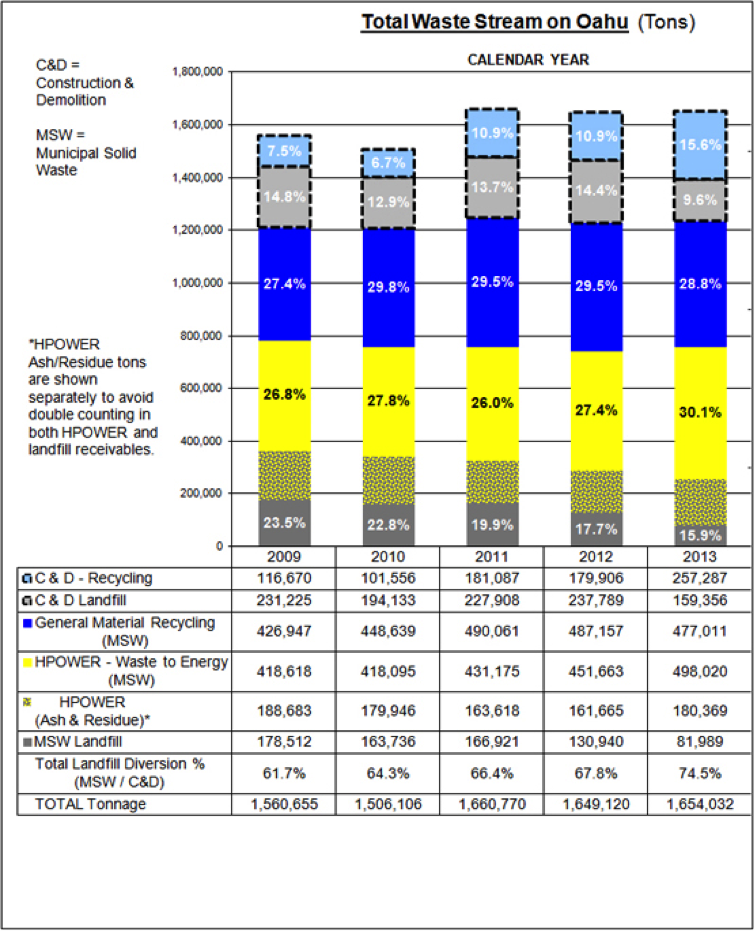- On Oahu, in 2013, 25.2% of all solid waste was from construction and demolition: About 40% of that (9.6% of the total waste) was not recycled.
- 38.4% of the total waste on Oahu was recycled.
- 30.1% was burned in the H-POWER waste-to-energy plant – but only 2/3 of this burned away, and left 1/3 as ash which had to go to the landfill
- The remaining 15.9% of waste was municipal waste which went directly to the landfill. See this chart from opala.org:
Waimanalo Gulch Landfill
The City has fought to keep the landfill open. Ko Olina Resort has fought to close it. In 2008, Colleen Hanabusa, who owns property at Ko Olina, filed a lawsuit claiming the EIS by Waste Management Hawaii to expand the landfill was insufficient. The suit has been in appeals, but on June 3, 2014, the Hawaii Intermediate Court of Appeals ruled against Hanabusa.
Caldwell has said that the landfill will be kept open for minimum use until another solution can be found. That could include things like finding a way to make use of the ash or finding a new landfill site for ash only. The process could take several years.
New landfill site
The City has been searching for a new site for a landfill. In 2009, the Land Use Commission ordered that the landfill be closed by July 2012 as a condition of approving a key permit for it, but that order was struck down by the Hawaii Supreme Court in May 2012.
A selection committee evaluated 454 potential sites for new landfills in 2011 or 2012 and cut the list down to 11, with a site in Kahuku being the top ranking candidate (there were 2 sites in Kahuku, 2 in Pupukea, 3 in Kailua/Kaneohe, one in Keeau, one in Nanakuli, and one in Hawaii Kai).
Ultimately, the mayor needs to make a recommendation, which must be approved by City Council. Then the City must conduct an EIS for the project.
Nobody wants a landfill in their own community, whether it’s Waianae, Kahuku or Kailua.
H-POWER
In October 2012, Covanta Energy Corp. completed an expansion to the H-POWER waste-to-energy plant adjacent to the current facility in a heavy industrial area near the Campbell Industrial Park. This allows enough capacity to process all of Oahu’s municipal solid waste at the H-POWER plant, generating up to 90 megawatts of electricity in the process. The ash from the plant must still go to the landfill.
Spills
In 2011, rains flooded the landfill beyond its ability to deal with the flood water, sending medical waste and other garbage into the ocean and onto the beaches around Ko Olina Resort.

